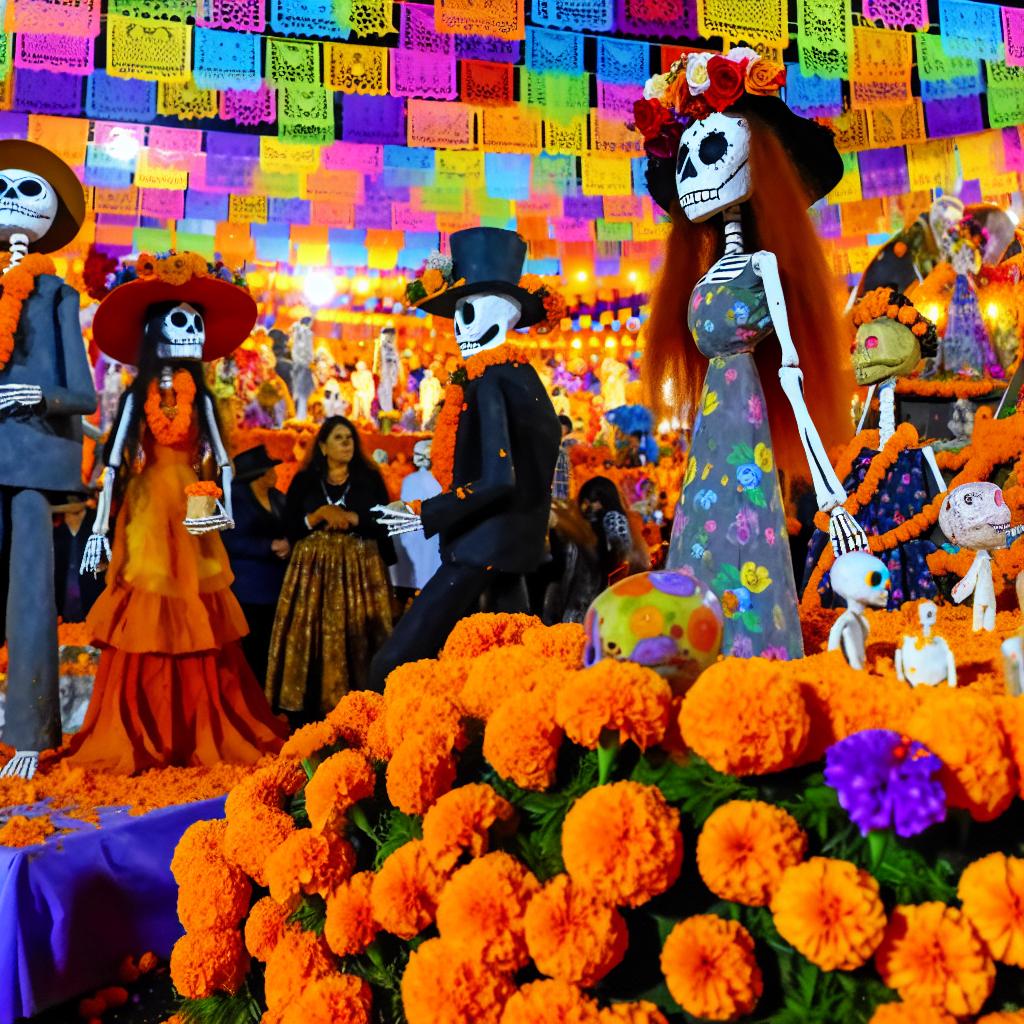Overview of Mexican Holidays: Día de los Muertos and Independence Day
Mexican culture is rich with traditions and celebrations, two of the most significant being Día de los Muertos and the country’s Independence Day. These events are not only important celebrations but also integral to the cultural identity and historical understanding of Mexico.
Día de los Muertos
Día de los Muertos, or Day of the Dead, is a multi-day festival celebrated from October 31 to November 2. Although it coincides with the Catholic observances of All Saints’ Day and All Souls’ Day, its origins predate the arrival of Europeans in Mexico, with roots in indigenous traditions, particularly those of the Aztecs. This fascinating holiday encapsulates a wide array of customs and beliefs that have evolved over centuries.
Purpose and Traditions
The celebration honors deceased loved ones and aims to welcome their spirits back to the world of the living. It is believed that during these days, the souls of the deceased return to visit their living relatives. Families create home altars, known as ofrendas, adorned with photos, memorabilia, and favorite foods of the departed. Marigolds, sugar skulls, and varieties of pan de muerto (a traditional sweet bread) are commonly placed on these altars.
These altars are central to the traditions associated with Día de los Muertos. Each element on the altar holds a special significance. For instance, marigolds are often referred to as the flower of the dead, and their scent is said to help guide the spirits back to the world of the living. The vibrant colors of these flowers contrast with the somber purpose, creating a festive yet reflective atmosphere.
Public celebrations include dressing in traditional attire and visiting cemeteries to clean and decorate graves. It is common for entire communities to partake in this, fostering social bonds and shared remembrance. Music, dancing, and storytelling often accompany these gatherings, providing an opportunity to celebrate life while honoring those who have passed away.
Significance
This holiday serves as a poignant reminder of mortality and emphasizes the importance of familial bonds and community. Día de los Muertos is recognized internationally and has been added to UNESCO’s list of Intangible Cultural Heritage of Humanity. Its recognition highlights the global appreciation of the unique way this celebration blends pre-Hispanic spiritual traditions with Catholic beliefs, teaching deep respect and love for life and for one’s ancestors.
The festival represents a continuous cycle of life and death, creating a profound perspective on mortality. Instead of viewing death with fear and sadness, it is approached with acceptance, respect, and even joy, allowing people to live life more fully in the present.
Mexican Independence Day
Mexican Independence Day, celebrated every year on September 16, marks the anniversary of the start of the Mexican War of Independence from Spain, which began in 1810. This crucial event in Mexican history has become a symbol of freedom and self-determination and is celebrated with great enthusiasm across the nation.
Historical Background
The movement for independence was initiated by Miguel Hidalgo, a Catholic priest, whose call to arms is known as the Grito de Dolores or “Cry of Dolores.” His declaration inspired a series of uprisings throughout the country, lasting over a decade until Mexico achieved independence in 1821. The struggle was not merely a military conflict but a societal revolution that altered the nation’s structure, laying the foundation for modern Mexico.
Hidalgo’s role is celebrated not only for his leadership but also for his daring to challenge well-entrenched colonial structures. He remains a vital figure in discussions of Mexican identity and honor, with his actions symbolizing resistance against oppression and the struggle for civil rights.
Celebrations
Festivities typically begin on the evening of September 15, with the current President reenacting the Grito from the National Palace in Mexico City, similar to Hidalgo’s original call. This is followed by fireworks, bell ringing, and the shouting of “¡Viva México!” Celebrations continue the next day with parades, music, and traditional dance performances. Such vibrant expressions foster a sense of belonging and pride among Mexicans, encouraging both reflection and jubilation.
Mexicans often adorn themselves and their towns in the national colors of the flag: green, white, and red. These colors, visible everywhere during this time, symbolize hope, unity, and the blood of national heroes, respectively. The presence of such patriotic symbols reinforces national identity, uniting citizens across different strata of society in a shared celebration of their country’s history and achievements.
National Impact
Independence Day is a fervent expression of national pride and unity. It is a moment for Mexicans to reflect on their history and celebrate their sovereignty and cultural identity. This holiday not only commemorates the historical event but also serves as a platform for conversations about the ongoing journey toward social and economic justice that continues today.
While the population celebrates, they also pay homage to the sacrifices made by past generations, acknowledging that the fight for freedom and equality is as relevant in contemporary times as it was during the early 19th century. The blend of history and modern-day reflection provides a rich tapestry that deepens the citizen’s appreciation for their nation’s narrative.
Both Día de los Muertos and Independence Day play pivotal roles in Mexican culture, showcasing the country’s vibrant traditions and historical narratives. These celebrations offer unique insights into Mexican life and reflect a society that values its diverse heritage. For further insights into Mexican heritage and these celebrations, you may explore reputable online resources and cultural websites.







